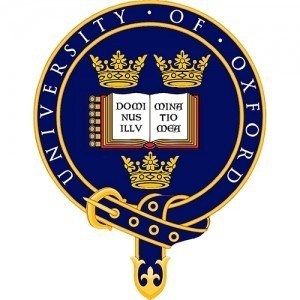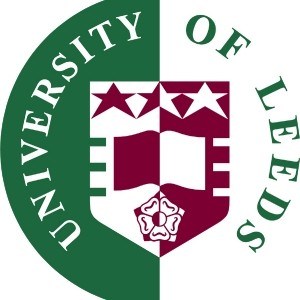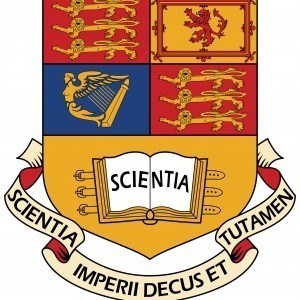Photos of university / #oxford_uni
Diamond Science and Technology at the University of Oxford offers an innovative interdisciplinary program designed to provide students with a comprehensive understanding of the science, engineering, and technological aspects of diamonds. This program combines rigorous coursework, practical training, and research opportunities to prepare students for careers in advanced materials, nanotechnology, and related fields. Students will explore the unique physical and chemical properties of diamonds, including their optical, electronic, and mechanical characteristics, and learn how these properties can be harnessed for applications in electronics, medicine, and industry. The curriculum covers core topics such as materials science, solid-state physics, and nanofabrication techniques, alongside specialized modules focusing on the synthesis, characterization, and applications of diamond materials. The program emphasizes hands-on experience, allowing students to participate in laboratory work, research projects, and collaborations with industry partners. Students will also develop essential skills in data analysis, scientific communication, and problem-solving, preparing them for leadership roles in academia or industry. Graduates of this program will be well-equipped to contribute to cutting-edge research and innovation in the development of diamond-based technologies, including quantum computing, biosensing, and high-performance electronic devices. With access to Oxford's world-class facilities and expert faculty, students will engage in an intellectually challenging environment that fosters curiosity, creativity, and scientific excellence. The program aims to cultivate graduates capable of advancing the frontiers of knowledge in diamond science and applying their expertise to real-world technological challenges.
In the first year you will undertake a purpose-designed MSc in Diamond Science and Technology at the University of Warwick. The course will be taught by academics from the partner universities and by industry experts. It will cover the fundamentals of the material science and technological applications – present and future – of diamond and related materials, from its use in abrasives and cutting tools to biomedical sensors, high power lasers, and quantum information systems.
The course begins with a pre-sessional week at Warwick during which social and networking sessions are organised for the cohort. The formal focus will also be to help chemists, physicists, material scientists, engineers and scientists from related disciplines, speak the same scientific language. This will be organised through workshops and small group interactions deliberately mixing different disciplines to discuss different basic concepts taught at undergraduate level.
During the two ten-week teaching terms (from the end of October to early December and then from mid-January to mid-March) the course is based around 11 two-week modules, nine of which are compulsory and two optional. Each module comprises a range of taught lectures, seminars, problems classes, workshops and laboratories. Teaching and assessment styles will be varied from module to module to best deliver and examine the training content. Lectures, seminars and workshops will be reinforced with a substantial practical or laboratory component. This will make use of the instrumentation and computational resources at Warwick, for example, state-of-the-art suites in magnetic resonance, electrochemical analysis, spectroscopy, electron microscopy, dedicated clean-rooms for the growth, characterisation and processing of new materials and next generation power electronics etc. The facilities will also be supplemented by the loan of specialised equipment from collaborators. The practical aspects of the modules will enable you to gain essential hands-on experience of a wide variety of techniques/instrumentation, eg CVD growth, laser processing, device fabrication, characterisation and instrumentation such as Raman, microscopy, XPS, data analysis and modelling.
Examination of the taught elements of the MSc will be by a mixture of continuous assessment of practical and class work, and written examinations which will take place in mid-April. From late April to early July and from mid-July to mid-September you will undertake two ten-week mini-projects at two different universities or industrial partners, which link to the theme of your chosen DPhil (PhD). The first mini-project will be examined by a poster presentation at the annual Diamond Conference, and the second by a written report. The chosen PhD programme will then commence in early October, subject to passing the MSc.
During the Oxford DPhil part of the CDT programme in years 2 to 4 there will be regular activities aimed at building the DST community, including seminars, away days and attendance at the annual Diamond Conference.
Other than these activities, the Oxford DPhil part of the CDT programme will primarily follow the standard three-year DPhil programme offered by the relevant department at Oxford. For further information on each course, please refer to the links in Group B (Non-CDT DPhils) under 'Multiple applications' below.
Applicants are normally expected to be predicted or have achieved a first-class or strong upper second-class undergraduate degree with honours (or equivalent international qualifications), as a minimum, in physics, chemistry, materials science, earth science, engineering or in an appropriate related discipline.
For applicants with a degree from the USA, the minimum GPA sought is 3.7 out of 4.0.
If you hold non-UK qualifications and wish to check how your qualifications match these requirements, you can contact the National Recognition Information Centre for the United Kingdom (UK NARIC).
No Graduate Record Examination (GRE) or GMAT scores are sought.
Other appropriate indicators will include:
- Official transcript(s)
- CV/résumé
- Statement of purpose/personal statement:500 words
- References/letters of recommendation:Three overall, of which at least two must be academic
The Diamond Science and Technology program at the University of Oxford offers a comprehensive financing structure designed to support students throughout their studies. Tuition fees for the program vary depending on the student's residency status, with international students typically paying higher fees than domestic UK students. For the 2023/2024 academic year, the estimated tuition fee for UK students is approximately £13,000 per year, while international students can expect to pay around £28,000 annually. These fees cover access to world-class facilities, academic resources, and specialist supervision.
In addition to tuition fees, students should budget for additional costs such as living expenses, which include accommodation, food, transportation, study materials, and personal expenses. The University of Oxford estimates that the annual cost of living for students in Oxford is approximately £14,000 to £18,000. Students preparing financially should consider these expenses when planning their budgets.
The university provides a range of financial aid options to help mitigate these costs. Scholarships and bursaries are available based on academic merit, financial need, or specific criteria related to the program. For instance, numerous scholarships are offered specifically for students undertaking science and technology programs, some of which are funded by external organizations or university endowments. These awards can significantly reduce the overall financial burden.
Students are encouraged to explore government-sponsored loans, particularly UK-based students who may access student loan schemes, which can cover both tuition fees and living costs. International students might seek funding from their home country or external scholarship bodies that support international study. The university also provides information about part-time work opportunities within Oxford, which can help students earn supplemental income during their studies.
It is recommended that prospective students contact the University’s admissions or financial aid office for detailed, up-to-date information on tuition fees, scholarship opportunities, and financial planning. Early application for funding is advised to maximize chances of securing financial support. Overall, the University of Oxford’s commitment to accessible education is reflected in its extensive financial support programs designed to ensure talented students can pursue their studies in Diamond Science and Technology without undue financial hardship.
The Diamond Science and Technology program at the University of Oxford is an interdisciplinary course designed to provide students with an in-depth understanding of the unique properties and applications of diamond materials. The program integrates principles from physics, chemistry, materials science, and engineering to equip students with the knowledge necessary for innovation and research in this cutting-edge field. Students will explore the fundamental aspects of diamond structure, synthesis methods such as chemical vapor deposition (CVD) and high-pressure high-temperature (HPHT) processes, and characterization techniques including spectroscopy, microscopy, and electrical measurements. The curriculum emphasizes the physical and chemical properties that make diamond an exceptional material, such as its outstanding thermal conductivity, hardness, optical transparency, and electrical insulating properties.
Students will also study the various technological applications of diamond, ranging from electronic devices, quantum computing components, optical systems, to cutting-edge biomedical devices. The program offers a comprehensive overview of current research trends and future prospects, preparing graduates for careers in academia, industry, or startups focused on advanced materials and nanotechnology. The coursework includes modules on the synthesis and manipulation of diamond at the nanoscale, as well as on the development of devices that utilize diamond’s unique characteristics. Practical laboratory work is an integral part of the program, giving students hands-on experience with state-of-the-art equipment and techniques used in diamond research.
The University of Oxford's program benefits from cutting-edge research facilities and close collaboration with leading research institutes and industry partners. Throughout the degree, students have opportunities to engage in supervised research projects, allowing them to contribute to ongoing innovations in diamond science and technology. Graduates of this program are well-positioned to pursue further research or to join industries such as electronics, aerospace, biomedical engineering, and renewable energy. Admission requirements typically include a strong background in physical sciences or engineering, and the program is taught by experts renowned in the field of materials science. This master's program typically spans one year for full-time students, with options for part-time study, and aims to cultivate highly skilled professionals capable of advancing the frontiers of diamond-related technologies.




